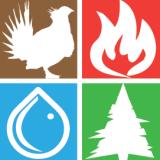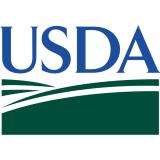Northern Plains Drought Update & Outlook – Tribal Webinar: July 27, 2021
Drought in the Northern Plains continues to worsen, and widespread impacts are being felt, including impacts on tribal lands in the region. In order to provide up-to-date information on the drought and its impacts, and associated resources for tribal nations, the National Oceanic and Atmospheric Administration (NOAA), U.S. Geological Survey, and U.S. Department of Agriculture (USDA) have partnered to host a drought webinar series this summer specifically for the tribal nations in the Northern Plains.
This third webinar, which took place on July 27 at 10 a.m. MDT/11 a.m. CDT focused on the impacts of drought on fish and wildlife in the Upper Missouri River Basin, as well as resources that are available from federal agencies for tribal nations to address these issues. The webinar also included an update on the current drought and outlook information.
Key Partners
This webinar was organized by the NOAA National Integrated Drought Information System (NIDIS), USGS North Central Climate Adaptation Science Center, NOAA National Centers for Environmental Information (NCEI) Regional Climate Services, High Plains Regional Climate Center, and USDA Northern Plains Climate Hub.






